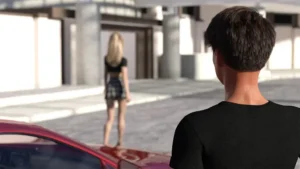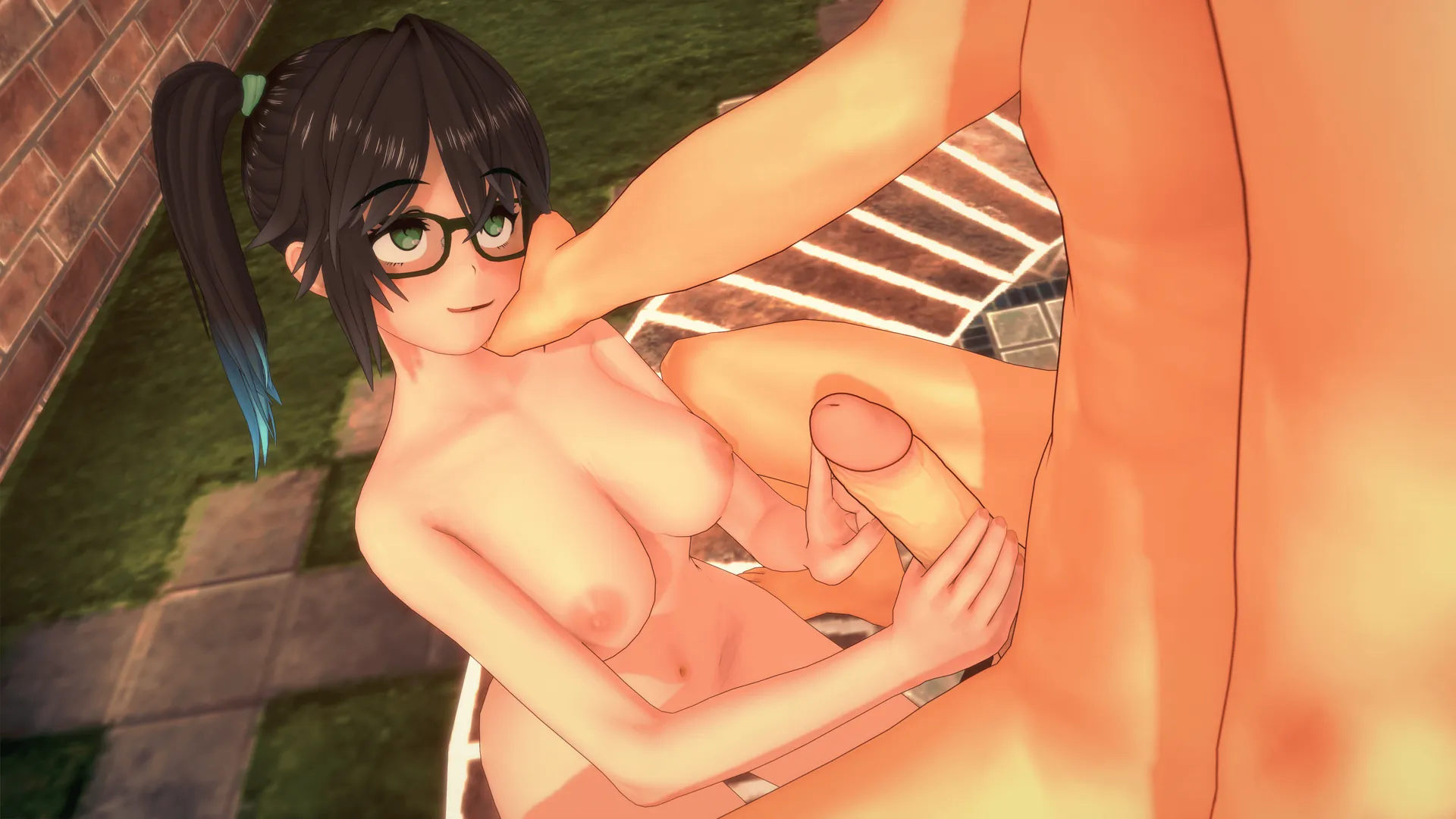
Second Chance
Play Second Chance
Second Chance review
A Deep Dive into the World of Second Chance
Second Chance is a unique game that offers players a chance to explore different storylines and character interactions. With its engaging narrative and diverse gameplay options, it has captured the attention of many gamers. In this article, we’ll delve into the game’s mechanics, routes, and features, providing insights into what makes Second Chance so compelling.
Game Mechanics and Routes
Understanding the Main Routes
Let me tell you, the first time I booted up Second Chance, I had no idea what I was getting into. I thought I’d just pick a path and see a linear story. Boy, was I wrong. 😲 The heart of the Second Chance gameplay mechanics is its branching narrative, and your journey is defined by the Second Chance game routes you pursue. It’s not just about who you end up with; it’s about who you become along the way.
The two primary paths that captivate most players are the Isabelle and Kate routes. These aren’t just simple romantic subplots; they are fundamentally different experiences that reshape your entire playthrough. Choosing between them is the game’s first major crossroad, and it’s a decision that echoes through every subsequent chapter.
I remember my first playthrough, blindly stumbling into Kate’s path. The vibe was immediately different—sharper, more intense, and unpredictable. On a subsequent run, I purposefully sought out Isabelle, and it felt like I was playing a completely different game, one filled with warmth and a slower, more emotional burn. This is the magic of the Second Chance game routes; they offer distinct narratives that cater to different player desires.
To help you visualize the core differences right from the start, here’s a quick comparison:
| Route Aspect | Isabelle’s Route | Kate’s Route |
|---|---|---|
| Overall Tone | Emotional, supportive, classic romance | Intense, challenging, power-dynamic focused |
| Initial Encounter | Often happens through helping others or shared hobbies | Typically begins with a direct, confident approach from Kate |
| Key Player Trait | Empathy, patience, emotional availability | Resilience, willingness to submit, embracing challenge |
| Story Pacing | Slow build, deep connection | Fast-paced, tests boundaries early |
Navigating these Second Chance game routes is all about paying attention to the subtle cues in dialogue. A choice that seems insignificant in Chapter 1 can lock you out of a route by Chapter 3. My practical advice? Save often and don’t be afraid to lean into a specific personality when talking to your chosen character. Consistency is key. 🔑
Character Interactions and Development
This is where Second Chance truly shines. The character development in Second Chance isn’t a background process; it’s the main event, and it’s driven entirely by your player choices in Second Chance. You aren’t just watching characters grow; you are the catalyst for their evolution, and they, in turn, are the catalyst for yours.
Let’s talk about Isabelle. 😊 Her route is a masterclass in building trust and breaking down walls. Initially, she can seem reserved, even a little distant. But through your interactions—choosing to listen to her problems, supporting her artistic endeavors, and showing genuine care—you witness a remarkable transformation. She blossoms, becoming more confident and open. The character development in Second Chance for Isabelle feels earned because you actively participated in it. You helped her find her voice.
Then there’s Kate. 😈 Her path is a whirlwind. The famous femdom content in Second Chance is central to her route, but it’s crucial to understand it’s not just a gimmick. It’s a core component of her character development in Second Chance. Kate uses these dynamics to test your mettle, to see if you can handle the version of herself she presents to the world. As you progress, your choices to accept her challenges or respectfully push back reveal layers of vulnerability and complexity she hides from everyone else. You’re not just submitting; you’re proving your worth and, in doing so, helping her confront her own insecurities.
Pro Tip: Don’t reload a save just because a character gets momentarily upset with a choice. Sometimes, the most significant growth comes from navigating conflict, not avoiding it.
Here’s a personal example of how a single choice can ripple through the story. In one playthrough on Kate’s path, I was given a choice: agree to her demanding request immediately or ask for a reason. I chose the latter, expecting a setback. Instead, it triggered a unique scene where she explained her past, adding incredible depth to her character and strengthening our connection far more than blind obedience would have. This is the power of player choices in Second Chance—they create unique, personal stories.
Replay Value and Quests
If you only play Second Chance once, you are genuinely missing out on over half of the experience. The replay value in Second Chance is absolutely staggering, and it’s what transforms this from a great game into an unforgettable one. 🔄 I’ve lost count of how many times I’ve replayed it, and each time, I discover new dialogue, new scenes, and new facets of the characters.
This incredible replay value in Second Chance is engineered through several brilliant mechanics:
- Divergent Paths: The Isabelle and Kate routes are almost entirely separate stories. Events that are major plot points in one route might be barely mentioned in the other.
- Hidden Scenes: Your choices unlock specific scenes that are easy to miss. On my third playthrough of Kate’s route, I finally got a quiet, tender moment that completely recontextualized her character for me—it was like meeting her for the first time.
- Varied Endings: Each main route has multiple endings, influenced by your cumulative choices throughout the game. Did you build a healthy relationship based on mutual understanding, or something more toxic and codependent? Only your actions decide.
The quest system is the engine for this. Unlike traditional fetch quests, the “quests” here are narrative milestones. 🗺️ They aren’t just tasks to complete; they are relationship benchmarks. “Gain Kate’s Trust” or “Help Isabelle With Her Exhibition” are multi-stage arcs woven into the main story. Replaying allows you to see how failing or succeeding at these quests alters the narrative flow.
To maximize your enjoyment and the replay value in Second Chance, I recommend this approach:
- Blind First Run: Go in completely blind. Make choices that feel true to you and see where you end up. This is your authentic story.
- Targeted Second Run: Pursue the other main Second Chance game route—if you did Isabelle first, go for Kate, or vice versa. The contrast is the most dramatic part of the experience.
- Completionist Third Run: Use a guide if you must to hunt down those hidden scenes and alternative endings for your favorite character.
The beauty of it all is that the game respects your time. With a robust skip function for seen dialogue, subsequent playthroughs are a breeze, letting you focus on the new content. So, don’t think of it as replaying the same game; think of it as unlocking a parallel universe within the same world. The depth of the Isabelle and Kate routes and the profound impact of your player choices in Second Chance ensure that your second, or even third, chance is a brand-new adventure. ✨
In conclusion, Second Chance offers a rich gaming experience with its diverse routes and engaging gameplay mechanics. By exploring the different paths and character interactions, players can enjoy a unique experience each time they play. Whether you’re interested in the narrative depth or the replay value, Second Chance has something to offer.








